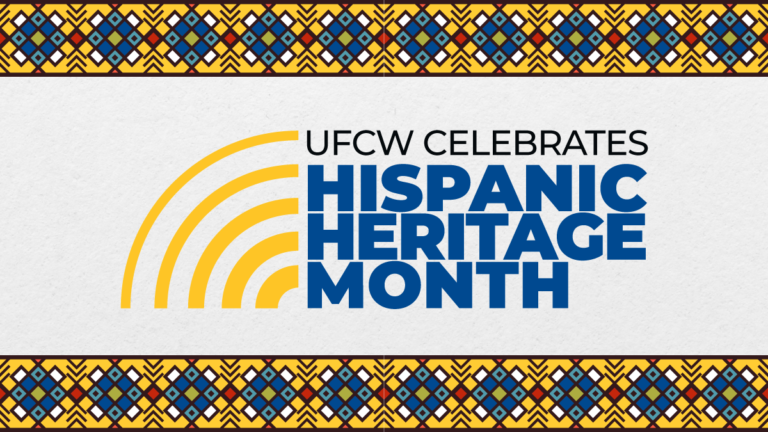
Hispanic Heritage Month is celebrated between September 15 and October 15, a time to pay tribute to Hispanic and Latinx Americans and their diverse contributions to our communities and our country.
In 1968, President Lyndon B. Johnson instituted Hispanic Heritage Week in recognition of the growing Latino population. In 1988, President Ronald Reagan expanded the celebration to cover a 30-day period from September 15 to October 15. Hispanic Heritage Month was enacted into law in 1988, and the start date of September 15 was chosen as it marks the anniversary of independence for a number of Latin American countries.
UFCW is grateful for all the Latinx unionists who have been integral in advancing and defending workers’ rights throughout the years.
As UFCW celebrates Hispanic Heritage Month, let’s look back and learn from some Hispanic and Latinx labor leaders who were not only trailblazers but left a lasting impact on the labor movement:
César Chávez
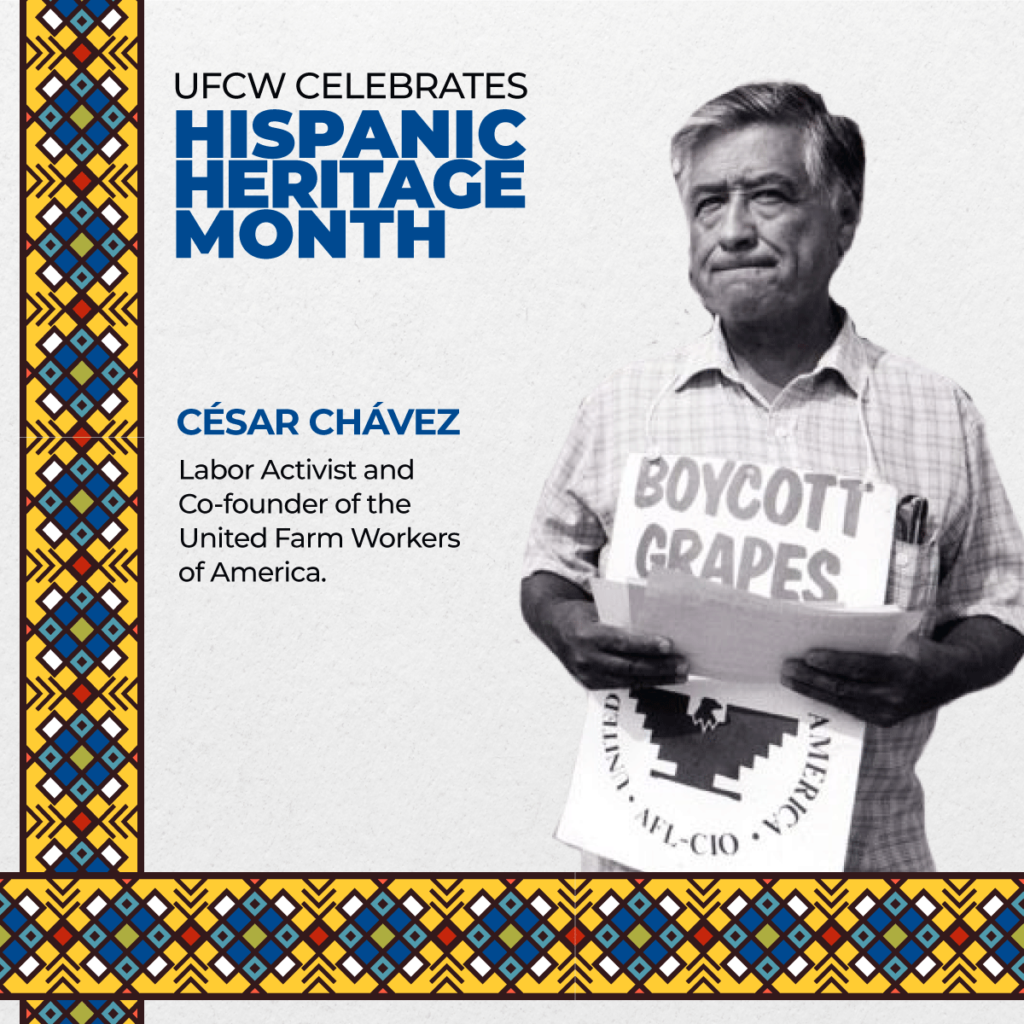
Chávez’s passion for social justice led him to become a community organizer, registering Latinos to vote so they could fight for their civil rights, but he understood that farmworkers could only win dignity and respect by banding together to form a union in the fields. Even some of Chávez’s allies doubted that Spanish-speaking migrant workers could ever organize successfully, but he led the creation of the organization that would become the United Farm Workers (UFW) in 1962.
The organization struggled at first, but in 1965 Filipino workers on grape farms launched a strike demanding wages equal to the federal minimum wage (from which they were excluded) and approached Chávez for support. Chávez inspired Latino workers in the grape industry to stand in solidarity with the strike, which spread rapidly through the California fields. During the strike, Chávez pioneered unprecedented strategies that have become invaluable to all of us in the labor movement. He led workers in long marches that crossed the state of California to raise awareness of the strike, sent workers and students to cities to lead consumer boycotts of table grapes, and even put his body on the line in a series of hunger strikes. After a grueling five year campaign, the UFW won the strike and secured living wages and a union voice in the grape fields.
After the triumph in the grape fields, the UFW grew dramatically until it represented more than 50,000 farmworkers, and farmworkers’ right to join together and bargain with their employers was enshrined in California law. Chávez continued to lead the UFW and fight for the rights of workers, immigrants, and Latinos until his untimely death in 1993.
Dolores Huerta
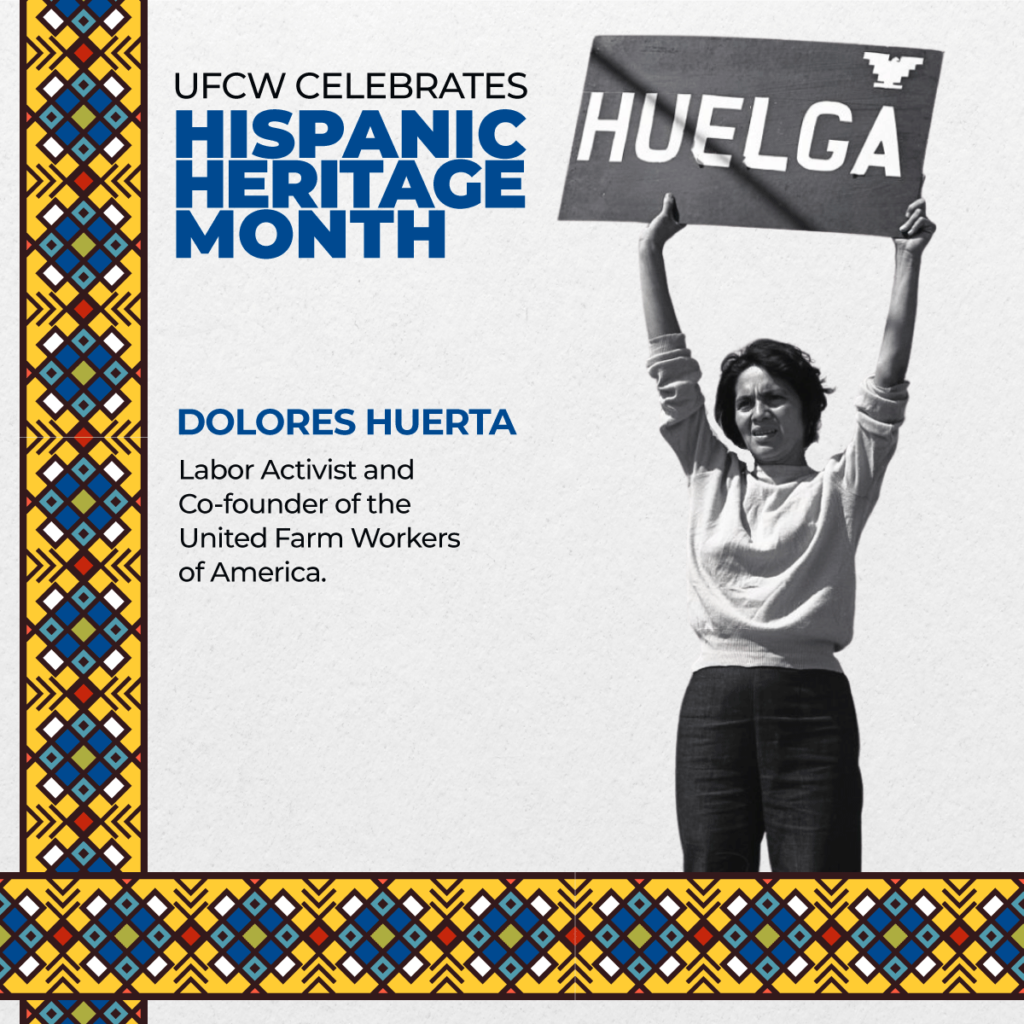
Before becoming a labor organizer, Dolores Huerta was a grammar school teacher, but soon quit after becoming distraught at the sight of children coming to school hungry or without proper clothing.
In 1955, Huerta launched her career in labor organizing by helping Fred Ross train organizers in Stockton, California, and five years later, founded the Agricultural Workers Association before organizing the United Farm Workers with Cesar Chavez in 1962. Some of her early victories included lobbying for voting rights for Mexican Americans as well as for the right of every American to take the written driver’s test in their native language. A champion of labor rights, women’s rights, racial equality and other civil rights causes, Huerta remains an unrelenting figure in the farm workers’ movement.
Luisa Moreno
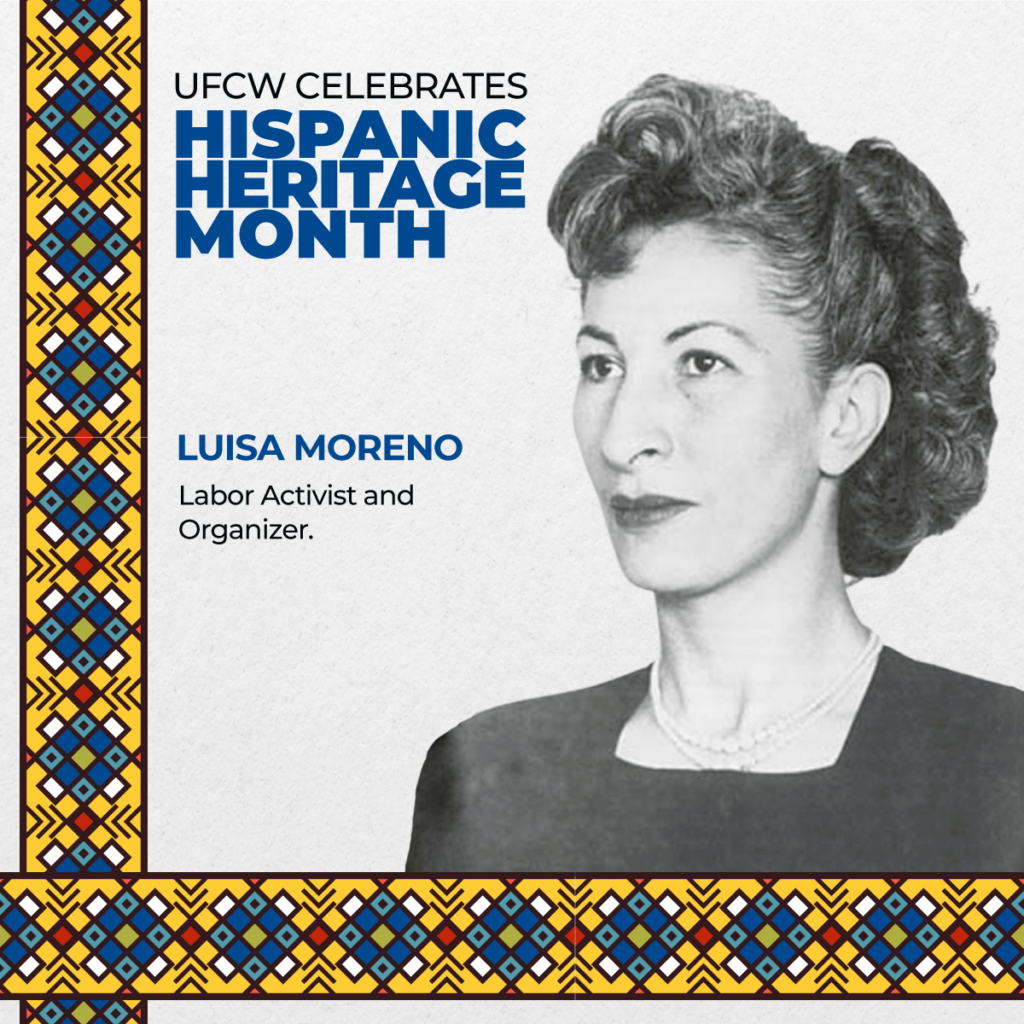
Luisa Moreno, a Guatemalan immigrant, first got involved in labor activism in 1930 at in Zelgreen’s Cafeteria in New York City, when she and her co-worker protested the employer’s exploitation of its workers with long hours, constant sexual harassment, and the threat, should anyone object, of dismissal. Hearing that workers would picket the cafeteria, police formed a line on the sidewalk that allowed customers to pass through. Luisa, in a fur collar coat, strolled through the cordon of policemen as if she was going to enter the cafeteria. When she was directly in front of the door she pulled a picket sign from under her coat and thrust it in plain view, yelling, “Strike!” Two burly policemen grabbed her by the elbows. They lifted her off the sidewalk and hustled her into the entrance way of a nearby building. She came out with her face bleeding and considered herself fortunate that she was not disfigured.
Moreno spent the next 20 years organizing workers across the country. Her story serves as a reminder of just how dangerous the conditions were in those days to simply make one’s voice heard, but her bravery helped change those conditions for the better.
Jessie De La Cruz
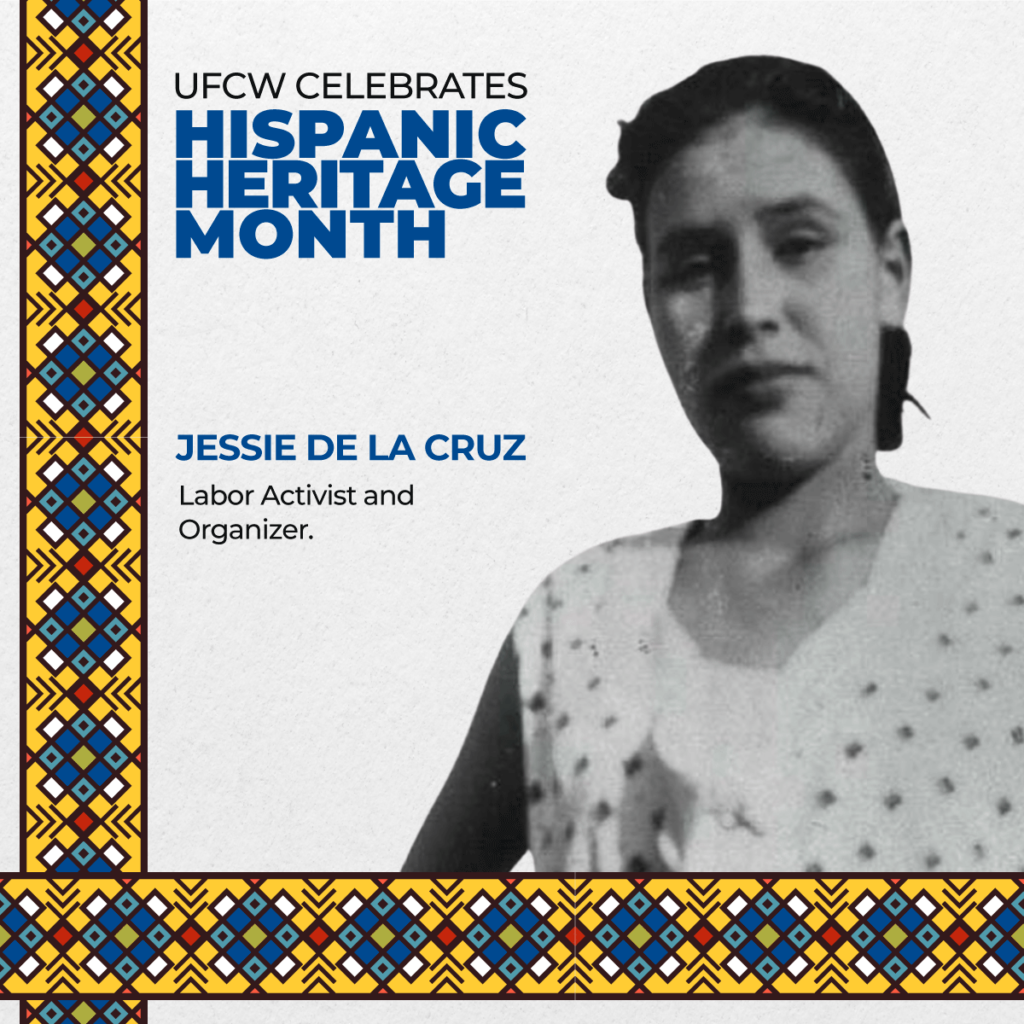
A field worker since the age of five, Jessie knew poverty, harsh working conditions, and the exploitation of Mexicans and all poor people. Her response was to take a stand. She joined the United Farm Workers union in 1965 and, at Cesar Chavez’s request, became its first woman recruiter.
She also participated in strikes, helped ban the crippling short-handle hoe, became a delegate to the Democratic National Convention, testified before the Senate, and met with the Pope. She continued to be a political activist until her death in 2013, at the age of 93.
Carmelita Torres
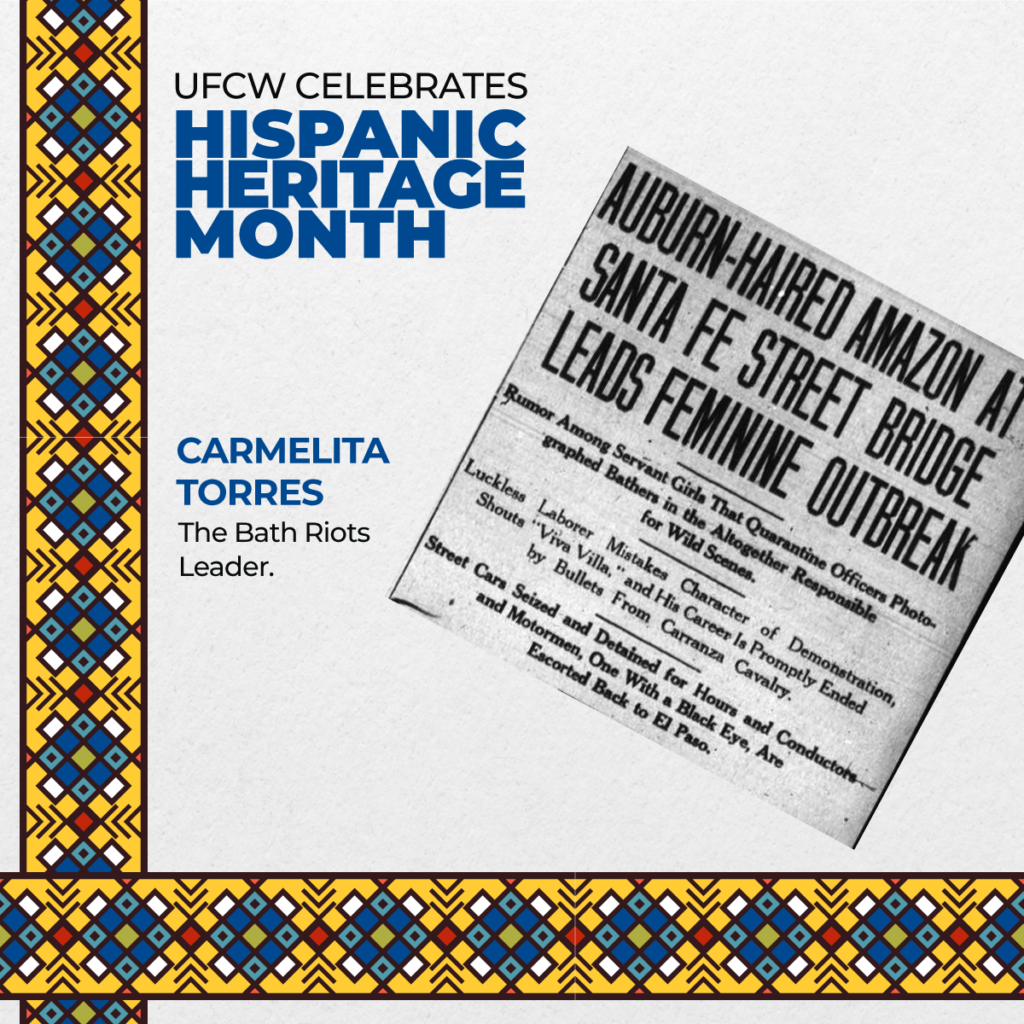
On Jan. 28, 1917, 17-year-old Carmelita Torres led the Bath Riots at the Juarez/El Paso border, refusing the toxic “bath” imposed on all workers crossing the border. Here is what the El Paso Times reported the next day: “When refused permission to enter El Paso without complying with the regulations the women collected in an angry crowd at the center of the bridge. By 8 o’clock the throng, consisting in large part of servant girls employed in El Paso, had grown until it packed the bridge half way across. “Led by Carmelita Torres, an auburn-haired young woman of 17, they kept up a continuous volley of language aimed at the immigration and health officers, civilians, sentries and any other visible American.”
Linda Chavez-Thompson
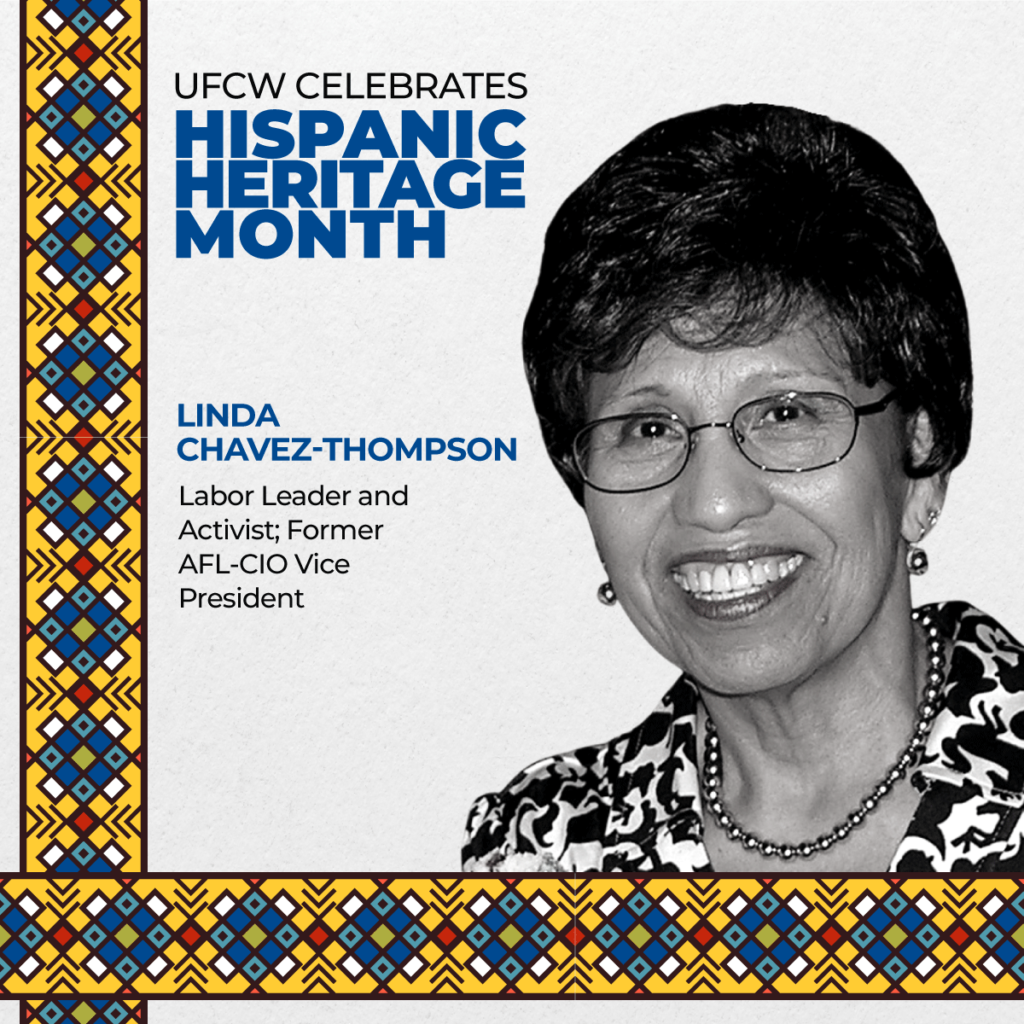
Mexican-American Linda Chavez-Thompson is a powerhouse in the labor movement, who served as the first Latina Vice President of the American Federation of Labor and Congress of Industrial Organizations (AFL-CIO) from 1995 until 2007. Until she retired, she worked in numerous organizations as a labor leader. Her work helped improve the quality of labor unions, and she set the bar high, as she was once the highest ranking women in the labor movement.
Baldemar Velasquez
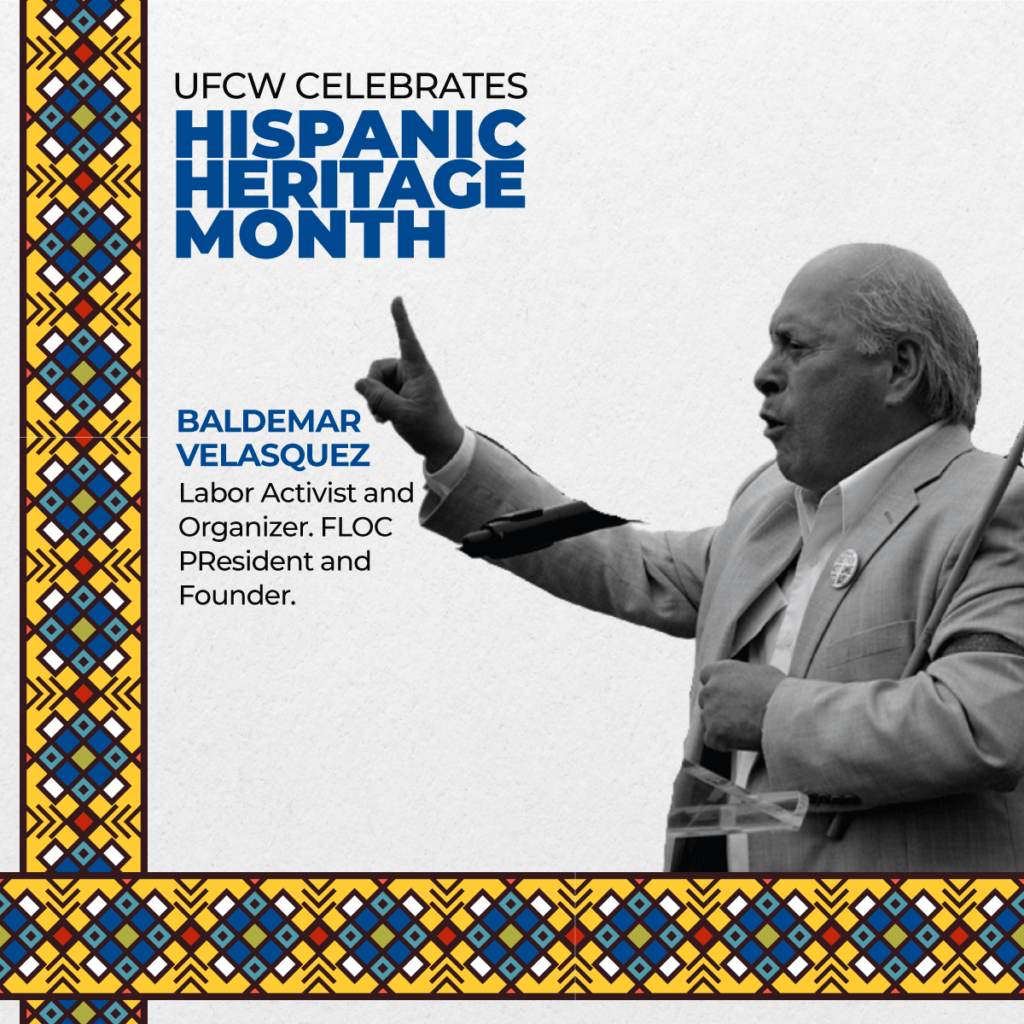
At the age of 12, Baldemar led his first strike, helping migrant workers at his summer job win better wages. After high school, he attended several colleges, graduating from Bluffton College in 1969 with a degree in sociology. He continued working while in college, and in 1967, Velásquez founded the Farm Labor Organizing Committee (FLOC) with his father. The initial idea behind the committee was to organize farm workers to seek improvements in pay, housing and education for pickers. Soon, Velásquez and FLOC were organizing strikes and other actions to convince growers to raise wages and improve working conditions. FLOC had significant success until the American Farm Bureau Federation convinced some growers to withdraw from the market and others to refuse to honor contracts.
In the 1970s, FLOC shifted its attention toward national and international companies, with Velásquez saying that the previous focus on local growers was a mistake and that real change would come from confronting farm-related corporations instead. The new strategy led to victories, including the 1978 strike against the Campbell Soup Co., which was the largest agricultural labor action in the history of the Midwest and which led to the first three-way contract with industry, grower associations and workers. That success led to expanded actions in the South, most notably with successful campaigns for workers at the Mt. Olive Pickle Co. in the 1990s and at R.J. Reynolds tobacco in the 2000s.
Ernesto Galarza
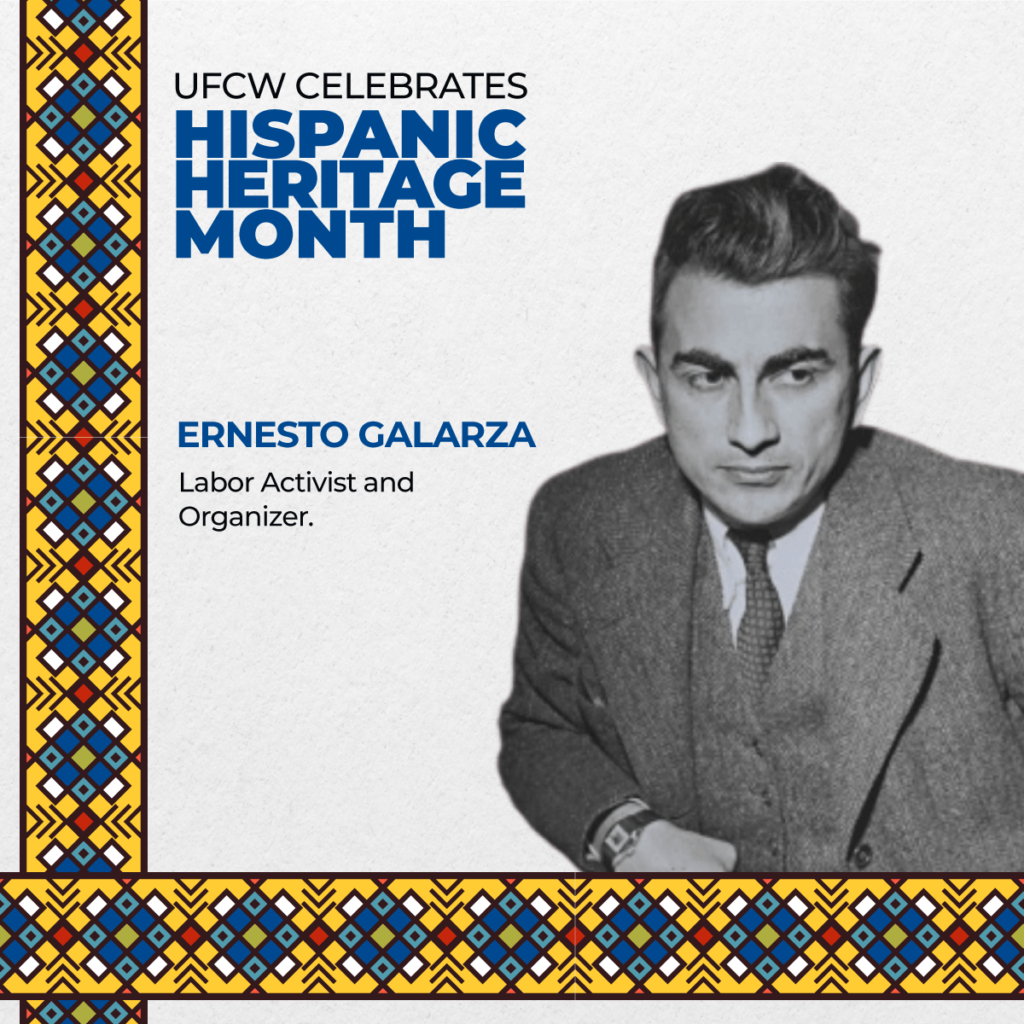
When he was young, Ernesto assisted his family during harvest season, gathering his first experience as a farmworker. Because he had learned English in school, other Mexican migrant workers asked him to speak to management about polluted drinking water, providing him with his first experience in organizing and activism.
Because of his experiences and education, he began to focus his efforts on improving the living conditions of working-class Latinos. This led to him being hired by the Pan American Union (later the Organization of American States) as a research associate. When the union created a Division of Labor and Social Information, Galarza was chosen to lead it.
In the late 1940s, he was recruited by the National Farm Labor Union, which later became the United Farm Workers, to be director of research and education. Over the next several years, he helped direct numerous strikes and fought back against “right to work” laws. He became a leading figure in exposing abuse of Mexican American workers in government.
Galarza became a leading writer on the plight of Mexican and Mexican American workers and the abuse of farmworkers. During his career, he wrote more than 100 publications and was a professor at the University of Notre Dame, San Jose State University, University of California, San Diego, and University of California, Santa Cruz.
Emma Tenayuca
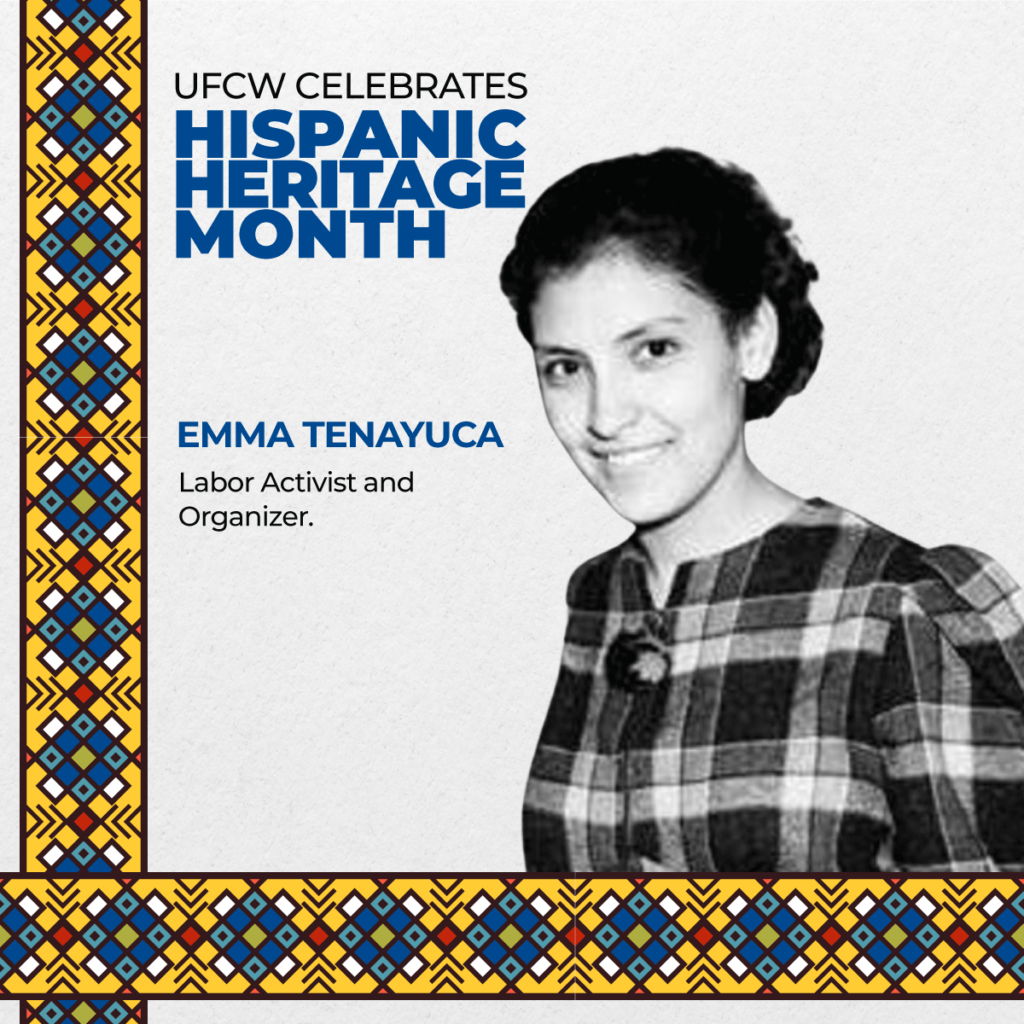
Emma Tenayuca was born in San Antonio, Texas on Dec. 21, 1916. Later, she would become known as “La Pasionaria de Texas” through her work as an educator, speaker, and labor organizer.
From 1934–1948, she supported almost every strike in the city, writing leaflets, visiting homes of strikers, and joining them on picket lines. She joined the Communist Party and the Workers Alliance (WA) in 1936. Tenayuca and WA demanded that Mexican workers could strike without fear of deportation or a minimum wage law. In 1938 she was unanimously elected strike leader of 12,000 pecan shellers. Due to anti-Mexican, anti-Communist, and anti-union hysteria Tenayuca fled San Antonio for her safety but later returned as a teacher.
Eliseo Medina
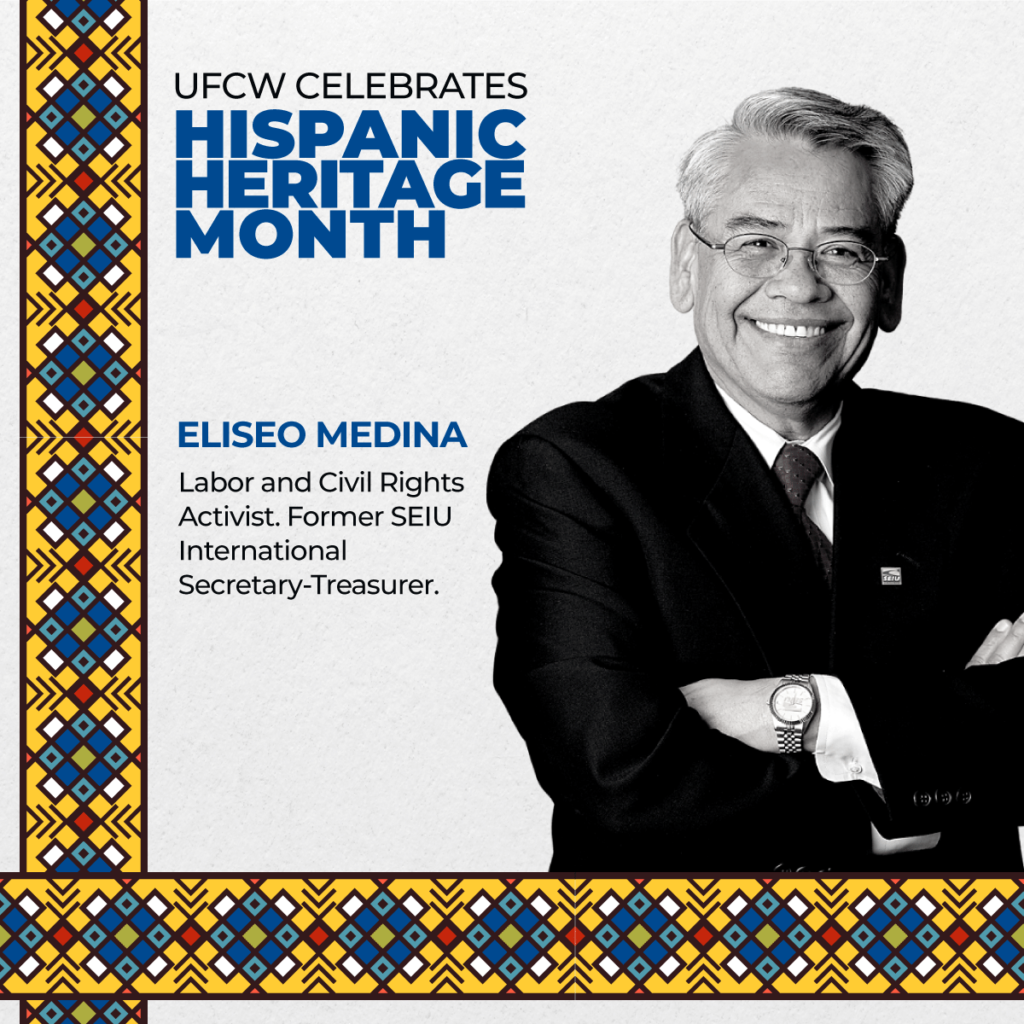
Prior to his retirement from labor, Eliseo served as SEIU’s International Secretary-Treasurer after holding various positions since 1986.
Eliseo’s career as a labor activist began in 1965 when, as a 19-year-old grape-picker, he participated in the historic United Farm Workers’ strike in Delano. Over the next 13 years, he worked alongside labor leader and civil rights activist Cesar Chavez, and eventually served as the United Farm Workers’ National Vice President.
Eliseo led the effort to unite the unions of the Change to Win federation and AFL-CIO around a comprehensive framework for immigration reform. Eliseo also helped strengthen ties between the Roman Catholic Church and the labor movement to work on common concerns, such as immigrant worker rights and access to health care.
Esther López
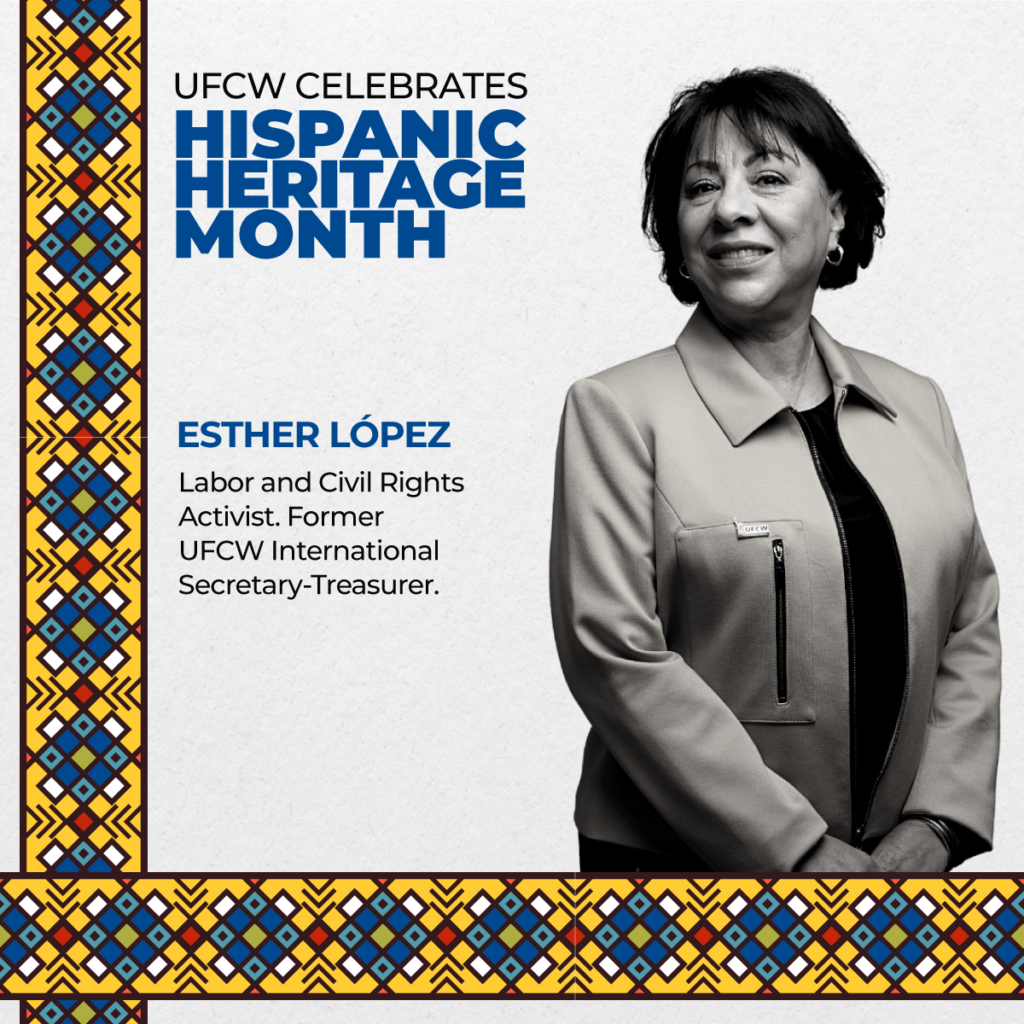
Esther Lopez labor activism started when she was in high school using her bilingual skills to register Latino voters and get them to the polls.
In November 2006, López joined the UFCW as director of the Civil Rights and Community Action Department. She served on the front lines of battles against voter suppression, ending exploitation of refugees, expanding opportunities for women and pursuing LGBTQ equality, including overseeing the launch of UFCW’s LGBTQ constituency group, OUTreach.
She created the UFCW’s Union Citizenship Action Network (UCAN), which focuses on helping union members get on the path to citizenship.
From 2016 to 2019, López served as UFCW International Secretary-Treasurer –becoming the first Latina to serve in that role in the union’s history.
Prior to her time at UFCW, Lopez played an active role in improving labor conditions within the state of Illinois, when she served as Deputy Chief of Staff for Labor, as well as in the governor’s cabinet as Director of the Illinois Department of Labor. She is recognized as a national leader on immigration reform and civil, human and labor rights.
—
If you are a UFCW member and want to get involved in Hispanic/Latinx activism in the union, you can reach out to ufcwunitedlatinos.org or like their Facebook page for updates.
Sources:



